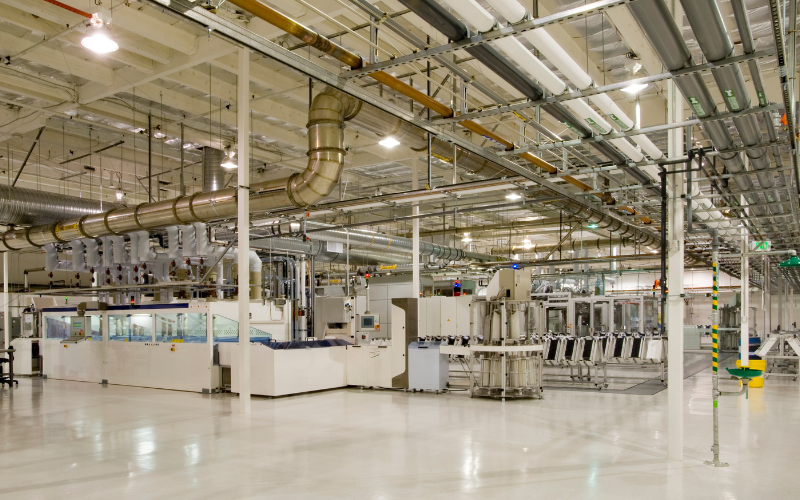Prescriptive Maintenance: Next-Gen Asset Management
Proactive equipment maintenance is important for businesses of all kinds, but it’s especially critical in industries like manufacturing, distribution, and electrical power production, which depend on seamless equipment operation. Proactive maintenance takes different forms, with some more effective than others. Prescriptive maintenance (RxM) is at the forefront of proactive asset management, providing more actionable insights than previously possible. An RxM program not only alerts reliability professionals to potential problems but also provides specific information on the type of problem that’s arising and what actions are required to address it.
How is prescriptive maintenance different?
You can think of proactive maintenance as a continuum of methods that provide various degrees of insight into equipment needs. Which method is ideal for any particular business depends on several factors. A company with more critical and valuable equipment will benefit more from prescriptive maintenance, and one that already has equipment monitoring and data management infrastructure in place will be better prepared to implement such a program. On the other hand, companies with less critical or costly equipment may be well served by a less robust maintenance plan.
Scheduled Preventive Maintenance
At one end of the spectrum is calendar based preventive maintenance. In its most basic form, this relies on equipment manufacturers’ recommendations to create a regular schedule of maintenance tasks. It doesn’t require any special technology and is generally more cost effective than simply letting equipment run until it fails. For small businesses, businesses with low equipment costs, and those that can better accommodate downtime, this can be an advantageous method.
Even when rigorously following a preventive maintenance pre-planned schedule, problems can arise unexpectedly. When they occur between scheduled maintenance events, unplanned downtime and potentially costly repairs can follow. On the other hand, because it lacks insight into how machinery is actually functioning, simply following a maintenance schedule can also involve some degree of waste.
Additionally, following a scheduled preventive maintenance process can potentially introduce problems where none previously existed. For example, a large gear box, when new, is essentially a sealed system. However if the manufacturer’s preventive maintenance schedule calls for opening and visually inspecting the gear mesh, then the maintainer would need to open the casing, exposing the interior workings of the gear box to contamination and thereby introducing a failure mode that hadn’t existed prior to this visual inspection.
Condition-Based Maintenance
A condition-based maintenance strategy utilizes real-time data input from sensors. Alerts and notifications are triggered when the sensors detect a need for maintenance based on preset thresholds for operational variables like temperature, vibration, and energy usage. (This is true for MSAI Cloud, a fixed mounted continuous monitoring solution, but we should also mention route-based inspections. People can have an in-house team or hire an inspection service company to perform these… we should emphasize hiring experienced professionals. Inspections should be performed by experienced experts leveraging cutting-edge technologies. Inspection helps to ensure efficiency and reliability in their operations. Plus, they help ensure compliance.) When a sensor detects an anomaly, workers can be instantly alerted so they can take immediate action to investigate the issue. This not only helps safeguard valuable equipment but can also protect public and worker safety by detecting leaks and electrical hotspots as soon as they occur.(CbM can also identify mechanical inefficiencies, i.e. a failing bearing or overtightened conveyor belt.)
Predictive Maintenance
Predictive maintenance uses a combination of sensors and data analytics to identify trends and predict when a machine is likely to fail. Because it uses data-driven insights in addition to real-time operational data, a predictive maintenance system can detect problems earlier than condition-based monitoring alone. This allows businesses to schedule maintenance when it’s needed while reducing unplanned downtime.
Prescriptive Maintenance
Prescriptive maintenance is the next generation of proactive equipment maintenance. It does everything a preventive maintenance system does and adds the power of AI and machine learning to take the next steps of pinpointing the root causes of issues and recommending specific solutions. Instead of simply giving a heads up that there’s a problem with a particular machine, a prescriptive maintenance system can identify the root cause of the issue and provide insight as to how to prevent it in the future. For example, the system might recommend specific maintenance task, or specific setting adjustments, to optimize asset performance and prevent unexpected failure.
MultiSensor AI for RxM
MultiSensor AI is at the forefront of developing technologies that make prescriptive maintenance possible. The MSAI Cloud platform is a prime example. MSAI Cloud combines advanced sensing and imaging technologies that capture a wide range of data on equipment health with AI-powered software that analyzes this data to identify patterns, predict potential problems, and deliver prescriptive recommendations to optimize machine performance and prevent failures. An RxM program backed by MultiSensor AI can help equipment-reliant businesses minimize downtime, make better informed decisions about equipment care and upkeep, and reduce equipment maintenance and replacement costs.
All businesses can benefit from a proactive approach to equipment maintenance. While a simple routine maintenance plan may be the right solution for many companies, those that depend heavily on the seamless operation of high value equipment need a more robust solution. MultiSensor AI provides the cutting-edge tools these businesses need to implement condition-based, predictive, or prescriptive maintenance programs. Browse our blog to learn more about how to build a more effective maintenance strategy.
